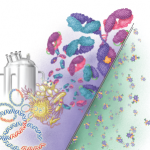Without distinct naming, “it will be difficult to tell if a patient has been switched, and to sort out whether a clinical change resulted from such a switch. It will also be impossible to track aggregate experience with the drugs, such as through adverse drug event reporting, to learn about potential safety signals with these agents,” he said.
No applications have been made yet for interchangeables, but pharmacists would be able to substitute these drugs for the reference biologic without notifying the prescriber. Seventeen states passed laws to require notification anyway, and more are considering legislation.
Pharmacists want to lower costs, streamline fulfillment and work with prescribers to ensure safety, said Bernadette Eichelberger, PharmD, program director of the Academy of Managed Care Pharmacy’s Biologics and Biosimilars Collective Intelligence Consortium. This research network was founded in 2015 to conduct analyses on biosimilars and their reference biologics, using data collected from managed care organizations, pharmacy benefit managers and physicians.
“Our job is to ensure that when these drugs come to market, they are being monitored,” said Dr. Eichelberger. “If we don’t have active surveillance of these products, it puts patients at risk.”
Some patients may be required to take a biosimilar by their insurer if they’re prescribed a biologic that has one, said Mr. Eich. Rheumatologists will still have treatment options.
“Even in that instance, you will ideally have a significant clinical choice as to which biologic to use,” said Mr. Eich. “You may still maintain the decision rights around which product you prescribe.” However, a right to prescribe a product, does not mean that the insurer can’t insist on switching to a formulary biosimilar.
How Much Savings?
It’s hard to predict the financial savings of biosimilars until they come to market. By looking at past biologic sales, potential discounting due to increased competition, European biosimilar prices, and increasing penetration of the drug market over the next decade, cost savings may top $44 billion over the next decade, and biosimilar price discounts may be as much as 35% lower, according to a 2014 study released by the RAND Corp.
Patients like Carolyn Amisano, who’s had RA for 42 years, say lower prices will make drugs accessible to more people who need them.
“The price will make a real difference in whether you’d be able to take that medicine. If they can come out with something more affordable, it would be great for many people, and saving a lot of families,” said Ms. Amisano, who has used two biologics in the past. “It’s a shame if you have to let drug costs influence your health. As long as I know it will work, and if it’s going to do the same thing, then it would be tremendous.”



